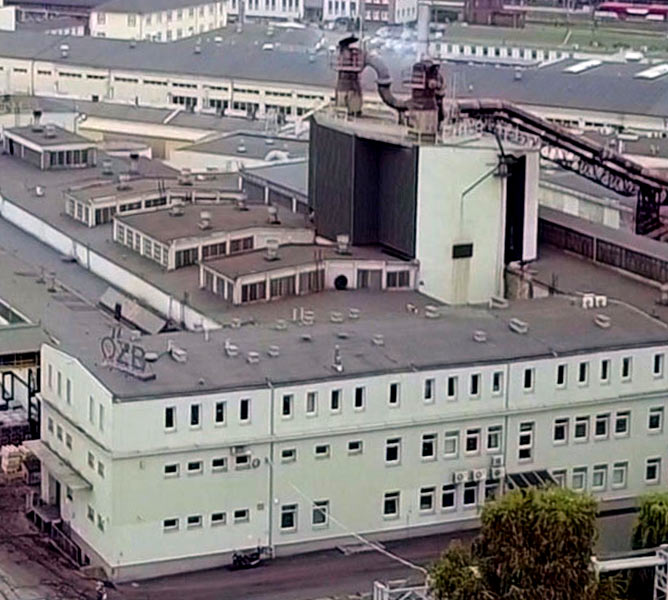Thanks to the funds from the National Fund for Environmental Protection and Water Management and the European Regional Development Fund, OŻB implemented the project WKP_1/2.4.1/4/2006/21/113.
“Retrofitting of the dedusting system of cupola batteries with a cold blast in order to adapt to the requirements of the integrated permit and NDT in Odlewnia Żeliwa Bydgoszcz Sp. z o.o.”
implemented under the Operational Programme ‘Increase of Economic Competitiveness’, 2004-2006, Priority 2: “Direct support for enterprises” Measure 2.4: “Support for enterprises in terms of adaptation of enterprises to environmental protection requirements”.
Dedusting of post-reaction gases from cupolas working alternately uses the dry dedusting method. The entire dedusting system consists of the following elements:
- Installation of upper parts of cupolas automatically closed with tilting flaps;
- Piping system equipped with automatically controlled dampers for switching lines from appropriate cupolas and intakes feeding cold air to the flue gas;
- Extraction gas coolers;
- Cyclone batteries;
- Bag filter;
- Exhaust fan;
- Stack.
Stage 1
Dirty gases are collected from above the charging door in the cupolas’ stacks and then passed through the piping system, in which the flue gas is mixed with cold air and cooled to 500ºC, and the flue gas is discharged to the exhaust gas cooler.
Stage 2
The aim of the cooler is to reduce the flue gas temperature from 500ºC to 130ºC. The tubular cooler forms the first stage of dedusting. It is terminated with a chute closed with a two-flap duct. The flow of cooling air is forced by axial fans.
Stage 3
A cyclone battery is placed between the cooler and the filter. The cyclone battery primarily protects the filter against unburned dust and glowing sparks.
Stage 4
Another element of the system is a bag filter, selected for a maximum gas flow of 41,500 m3/h and the maximum temperature of 130ºC. The filter is terminated with two chutes closed with slotted locks and is equipped with compressed air regeneration. The filtration material is made up of the needleloom felt, resistant to mechanical damage.
Due to increased erosion potential of extracted gases, the filtration material has been surface-treated to increase the bag resistance.
Stage 5
Dust from all the dedusting facilities is discharged into the Big Bags and transported to a dumping site.





